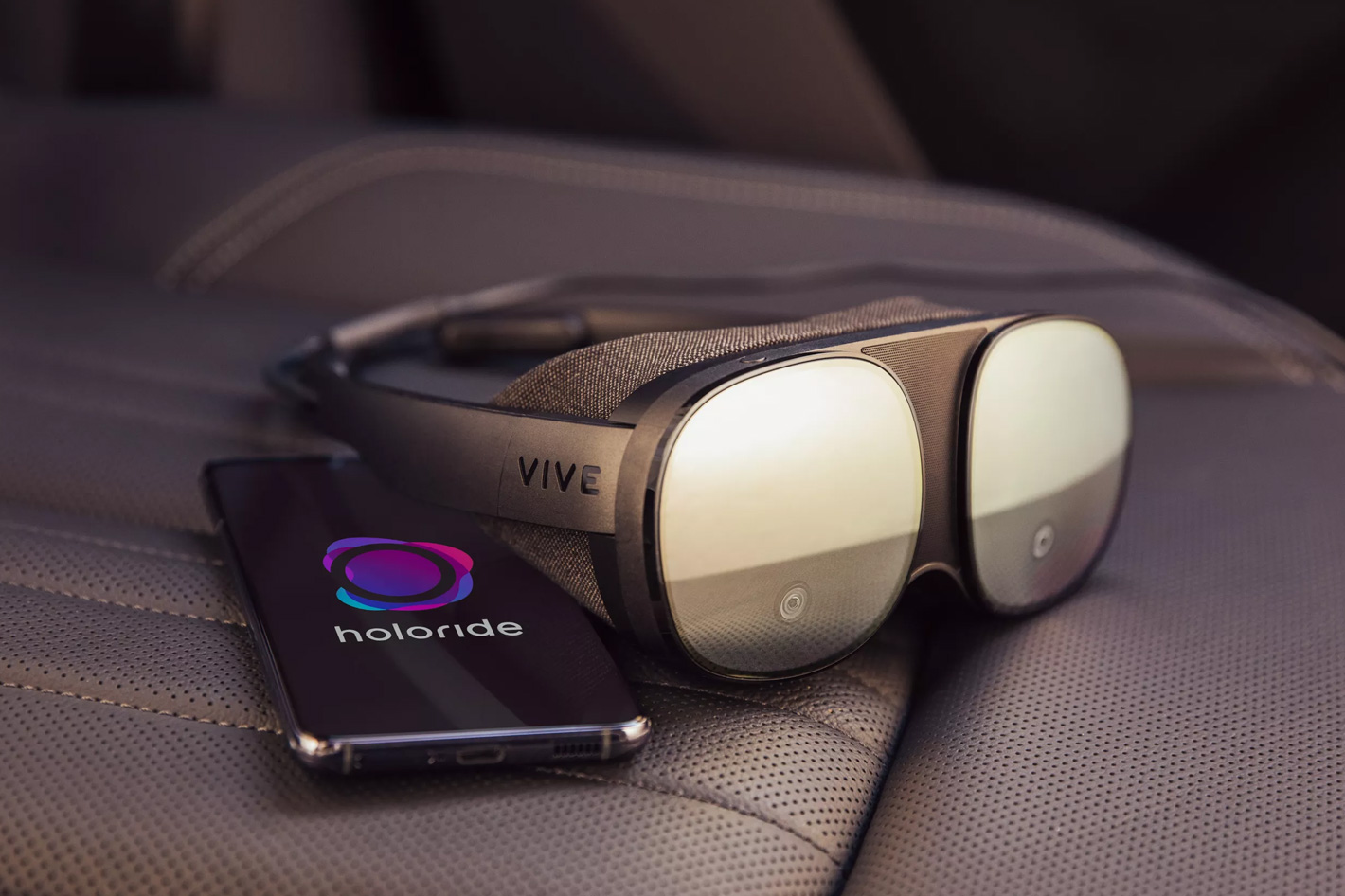
The first drive-in theater or drive-in cinema opened its doors on April 23, 1915, at the Theatre de Guadalupe, in Las Cruces, New Mexico. Still a partial drive-in theater, the enclosed area had space for some 40 cars, so customers could view movies from the privacy and comfort of their cars. More than one hundred years later, holoride, the company advancing the future of in-vehicle entertainment, announces it will deploy its extended reality (XR) technology in VIVE Flow, a compact and lightweight immersive glasses device, to transport users from the backseat of a car to an imaginative world filled with content around every turn.
Although backseat entertainment has been around for a while, using screens, the solution offered by the cooperation between holoride and HTC opens new possibilities. VIVE Flow will be the first holoride-ready VR device for series integration in cars in the scope of the company’s market launch in the second half of 2022. It allows you to watch movies on the backseat of a moving car, but it also offers access to a variety of content, including both VR and traditional 2D content.
The system, Holoride says, “adds thrill to every ride by merging XR content with real-time motion, location and navigational data from the car and its environment, creating hyper-immersive experiences. With VIVE Flow, riders can naturally navigate and maneuver through the virtual worlds with the same intuitive gestures as they would with conventional VR devices. And with holoride’s advanced cinema mode, individual users can privately enjoy 2D content on a virtual, motion-synchronized cinema screen”. Meaning that although sharing backseat space with someone else, you may be watching different movies while riding.
“holoride is on a mission to create exciting in-vehicle experiences for passengers to travel the Metaverse, and that starts with putting our technology in the hands – or on the heads – of riders”, said Nils Wollny, CEO and co-founder of holoride. “VIVE Flow is the ideal device for on-the-go XR, so we are thrilled to be partnering with HTC VIVE to give riders direct access to holoride. The glasses’ sleek, portable design means riders can enjoy a fun and connected experience anywhere they go.”
VIVE Flow is the perfect travel companion. Weighing just 189g, it’s comfortable to wear and lightweight, so that riders can easily transport the glasses to and from the car. The dual-hinge design and soft face gasket make VIVE Flow easy to put on, take off and fold down into a compact footprint. And it delivers a cinematic screen to enjoy the content on, whether that’s gaming or TV and films.
VIVE Flow can fit in the palm of your hand and still deliver a breathtaking experience, said Shen Ye, Global Head of Hardware at HTC VIVE. “Paired with holoride’s impressive tech, you’ll be able to turn car rides into virtual amusement parks. We’re very excited to work with holoride in shaping the future of passenger entertainment.”
VIVE Flow integrated with holoride’s XR technology will be on display and available for demo as part of the HTC VIVE exhibition booth (Hall 7, stand 7A40) at Mobile World Congress taking place in Barcelona, Spain Feb. 28 – Mar. 3.
Founded at the end of 2018 in Munich, Germany by Nils Wollny, Marcus Kuehne, Daniel Profendiner and Audi, who holds a minority stake in the startup, holoride creates an entirely new media category for passengers by connecting Extended Reality (XR) content with data points from the vehicle in real time. In April 2021, holoride raised €10 million in its Series A funding round led by Terranet AB, earning the company a €30 million valuation. That same year, holoride won the prestigious SXSW Pitch and was also named Best in Show. It has been hailed “Best of CES 2019” four times, recognized as one of the “100 Best Inventions of 2019” by TIME Magazine and is part of the global innovation platform “STARTUP AUTOBAHN powered by Plug and Play”.
